When the Vikings invaded the northeastern coast of Britain in 793, they raided the monastery at Lindisfarne. The monks fled – and they carried with them the remains of Saint Cuthbert.
His coffin not only contained a corpse but also material relics, the Saint Cuthbert Gospel among them. The book so well preserved in his coffin has been recognized as a marvel among medieval manuscripts, along with the Lindisfarne Gospels, which the monks also saved from destruction by the Danes. Much like these extraordinary books, the embroidery that survived alongside Saint Cuthbert’s body is remarkable for its rarity.
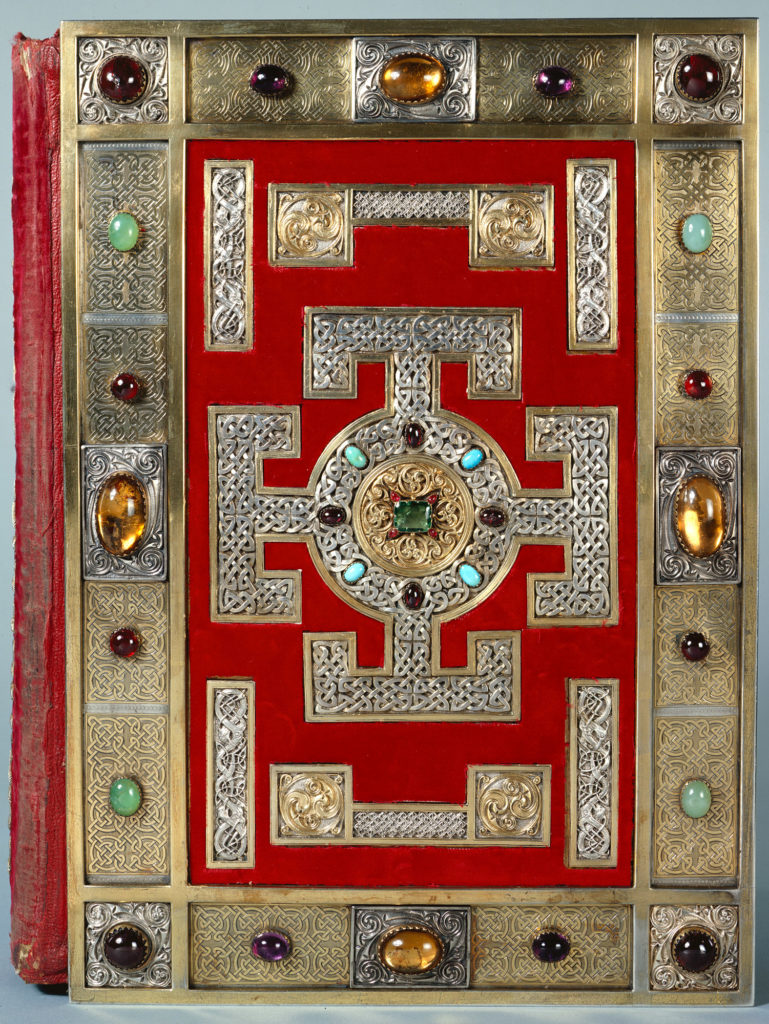
Cuthbert of Lindisfarne was born in 634 and spent his life as a monk, bishop, and hermit in the Kingdom of Northumbria. When he died in 687, he was buried at Lindisfarne. As the Venerable Bede recounts the story, Saint Cuthbert’s coffin was opened again 11 years later with the intention of removing his bones to a reliquary, but his body was found to be perfectly preserved.
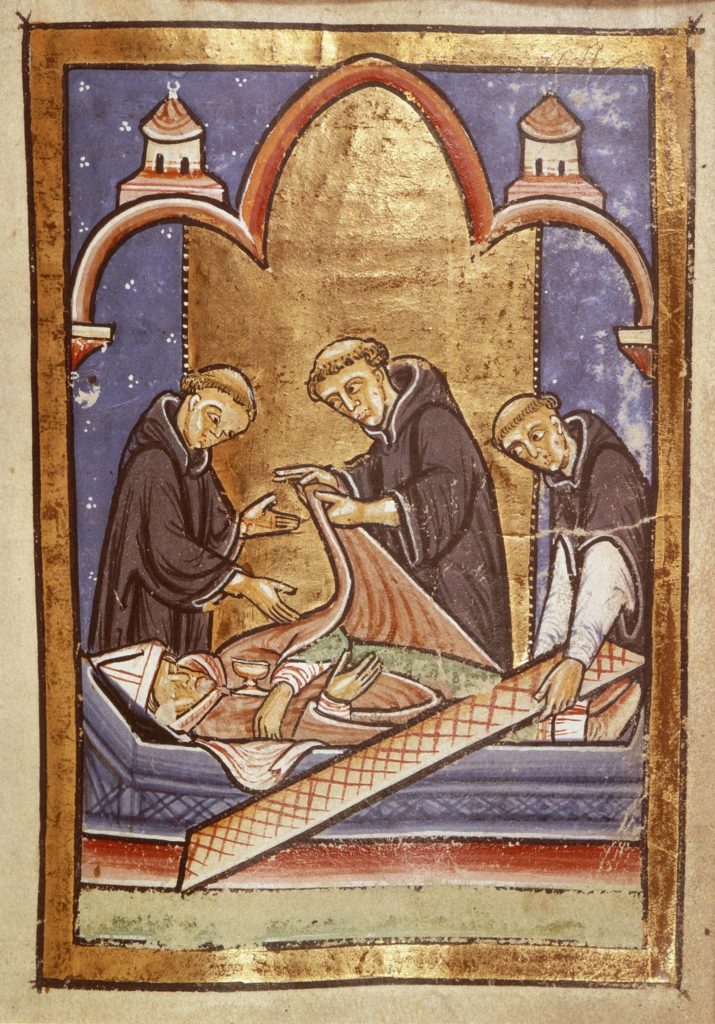
Under the duress of Danish attack, it was more than 100 years before the monks laid Saint Cuthbert to rest in Durham, where they settled in 995. Several artifacts accompanied Saint Cuthbert as he traveled posthumously around the English countryside, and the book and embroidery are very special for their survival.
The Saint Cuthbert Gospel was discovered when the coffin was opened at Durham Cathedral in 1104, and like the body of its patron, the book remained incredibly well preserved. Dated to the early 8th century, it is the earliest European book to retain an original, intact binding.[1] The covers are made from goatskin that has been dyed red and decorated; the tooled leather is stretched over wooden boards, most likely birch. It is a pocket-sized book measuring 5.4 by 3.6 inches, and the manuscript contains the Gospel of Saint John.
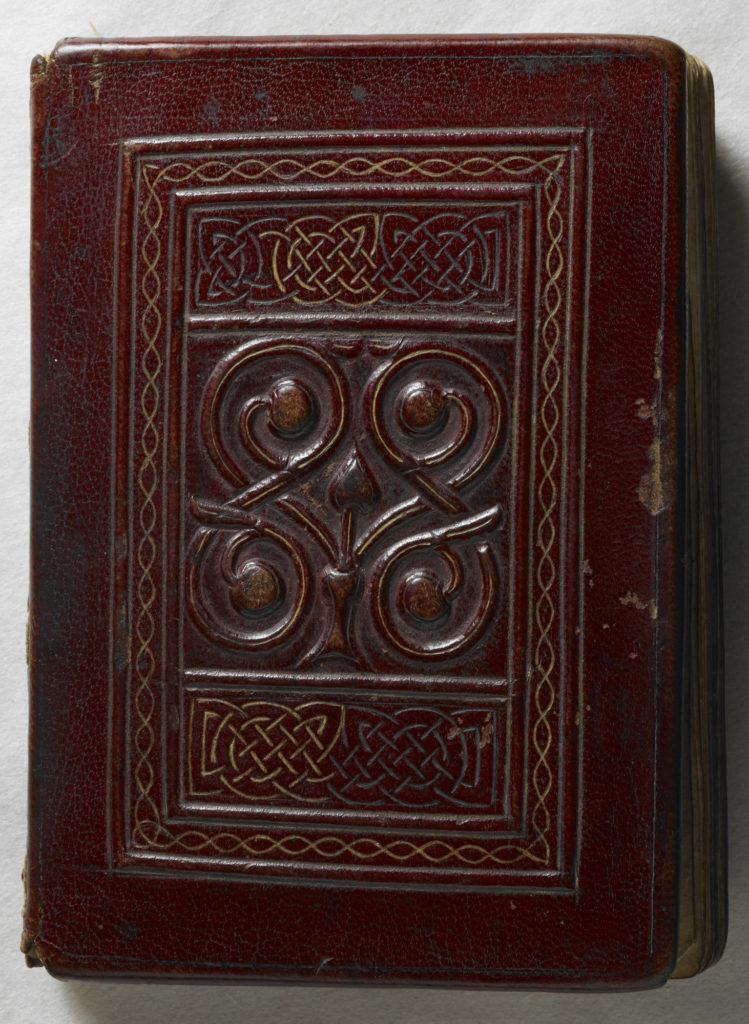
The British Library’s description of the binding beautifully correlates the book’s cover with its content. On its front cover, “the central motif of a stylised vine sprouting from a chalice reflects Christian imagery from the eastern Mediterranean. The plant on the cover of the Gospel has a central leaf or bud and four fruits, echoing the text, ‘I am the vine, you are the branches’, from St. John’s Gospel 15:5.”[2] On the back cover appears “rectangular borders containing a geometric, step-pattern double-armed cross, recalling John’s central role in the Crucifixion narrative.”[3]
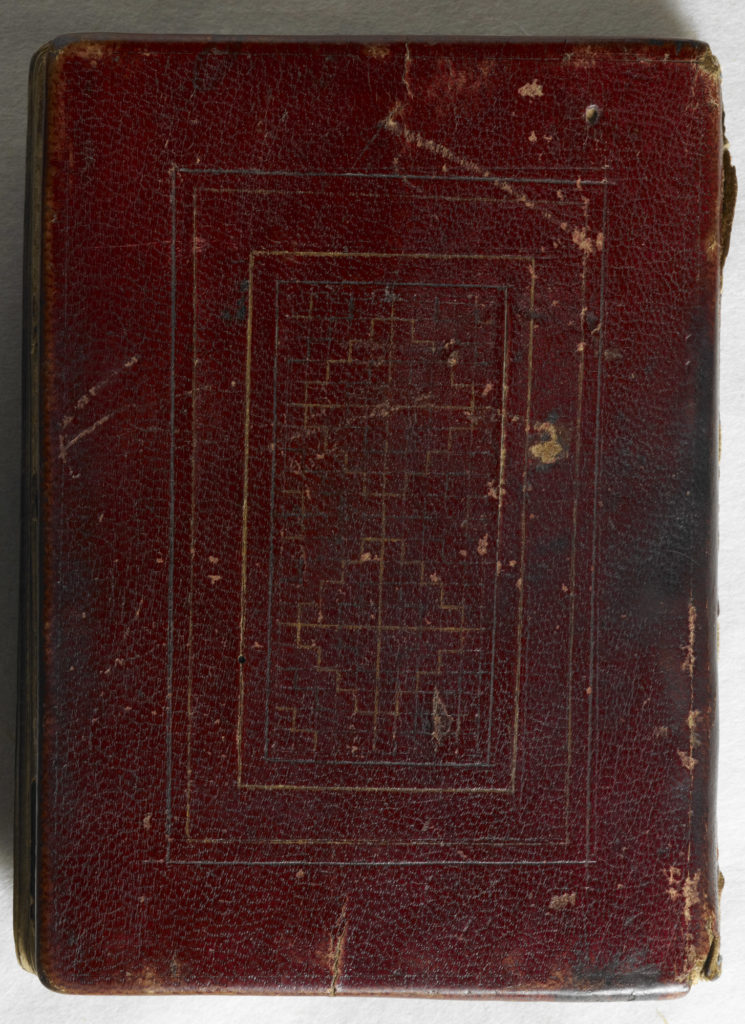
The other relics were discovered much later when Saint Cuthbert’s tomb was opened in 1827. In addition to the saint’s body, Canon James Raine found a pectoral cross, a portable altar, an ivory comb, and a set of embroidered vestments.[4] The vestments, or religious robes, date between 909 and 916 and are the earliest pieces of embroidery that survive from the medieval period in England.
Only a few pieces of Anglo-Saxon embroidery survive at all, and these pieces are unique among the extant examples in that they feature full-length human figures. The vestments include a stole decorated with figures of Old Testament prophets and Apostles, as well as a maniple, a girdle, and bracelets. They are made from Byzantine silk with silk and gold thread decoration. According to inscriptions on the fabric, the vestments were commissioned by Queen Aelfflaed for the Bishop of Winchester and produced between 909 and 916. Her stepson, King Athelstan, who ruled England from 927 to 939, placed them in Saint Cuthbert’s tomb when he visited the shrine in 934.
The style of embroidery called Opus Anglicanum, or English Work, was used on clothing, hangings, and other textiles, often created with silk and gold or silver-gilt threads stitched on linen or velvet backgrounds. Between the late 12th and mid-14th centuries, these luxury goods were in great demand across Europe. Often they were procured as diplomatic gifts, and they were very expensive. They were produced for both secular and ecclesiastical use, but most of the surviving examples were designed for liturgical use like those found alongside Saint Cuthbert.
Although English embroidery was renowned for its beauty during the medieval period, the majority has been lost to neglect or destroyed for the extraction of precious metals or stones, such as pearls and other jewels mentioned in inventory descriptions. Fragments, however, can be found in museums, and one of the most substantial collections of Opus Anglicanum can be found at the Victoria and Albert Museum in London.
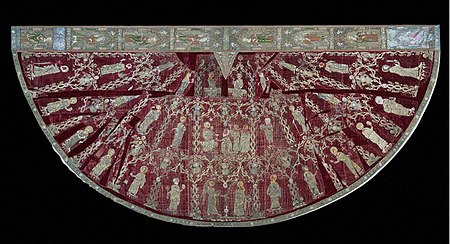
The vestments recovered from Saint Cuthbert’s tomb can be seen on display at Durham Cathedral, where visitors can view the entire Treasures of Saint Cuthbert collection. The oak coffin made to cradle the saint’s body when he was found incorrupt in 698 also resides among the relics, its own fragmented body a reminder of what arduous travels medieval artifacts endure to remain with us in our own time.
Emily McLemore, Ph.D.
Department of English
University of Notre Dame
[1] “St Cuthbert Gospel,” British Library.
[2] “St Cuthbert Gospel,” British Library.
[3] “St Cuthbert Gospel,” British Library.
[4] “The treasures of Saint Cuthbert,” Durham Cathedral.
